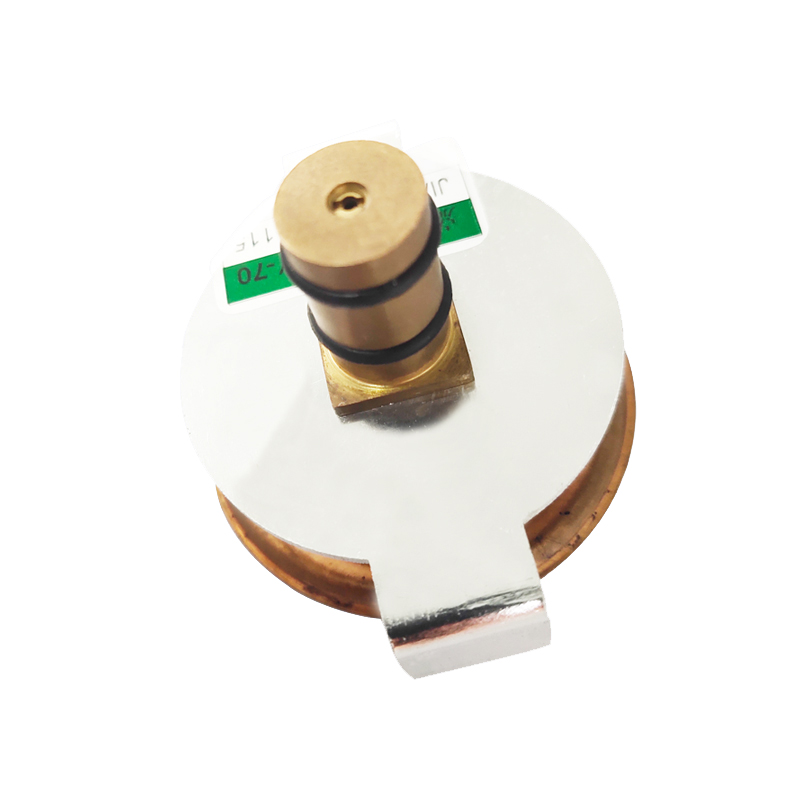
Nov . 22, 2024 23:44 Back to list
jah bourdon type differential pressure gauge
Understanding the JAH Bourdon Type Differential Pressure Gauge
Differential pressure measurement is a critical aspect of various industrial applications, providing essential data for system monitoring, control, and optimization. Among the numerous devices available for measuring differential pressure, the JAH Bourdon type differential pressure gauge stands out for its reliability, accuracy, and ease of use. This article explores the fundamental principles, design, applications, and advantages of the JAH Bourdon type differential pressure gauge.
The Principle of Operation
At the core of the JAH Bourdon type differential pressure gauge is the Bourdon tube, a slender, curved tube that reacts to pressure changes. When a differential pressure is applied across the two ends of the tube, it causes the tube to straighten slightly. This movement is mechanically linked to a pointer that indicates the pressure reading on a calibrated dial. The Bourdon tube's ability to translate pressure into mechanical motion is what makes this gauge effective for measuring differences in pressure.
Design Features
The design of the JAH Bourdon type differential pressure gauge typically incorporates several noteworthy features
1. Robust Construction Made from durable materials, these gauges are built to withstand harsh industrial environments, including extreme temperatures and corrosive substances.
2. Calibration These gauges come with factory calibration to ensure high accuracy. Some models may also offer field calibration options to maintain precision over time.
3. Dual Port Configuration The differential gauges typically have two inputs, allowing them to measure the pressure difference between two points in a system effectively.
4. Clear Dial Display The large, easy-to-read dial with clear markings enables operators to quickly assess pressure levels, which is essential in fast-paced environments.
5. Variety of Ranges Available in different pressure ranges, the JAH Bourdon type differential pressure gauge can cater to diverse applications, from low-pressure environments to high-pressure systems.
Applications
The application of JAH Bourdon type differential pressure gauges spans various industries. Some typical uses include
jah bourdon type differential pressure gauge

- Filtration Processes In filtration and separation processes, the differential pressure gauge helps to identify when filters are becoming clogged, allowing for timely maintenance and replacement.
- Chemical Processing Accurate pressure measurement is vital in chemical plants, where these gauges can monitor the pressure drops across reactors and columns, ensuring safe and efficient operations.
- Fluid Dynamics In applications involving the flow of liquids and gases, these gauges can provide insights into the operational performance of pumps and valves.
Advantages
The JAH Bourdon type differential pressure gauge offers several advantages that make it a preferred choice among engineers and technicians
- Simplicity and Reliability The mechanical design makes the JAH gauge straightforward to operate and maintain, reducing the likelihood of failure compared to electronic alternatives.
- Cost-Effectiveness With fewer components and a lower chance of malfunction, Bourdon-type gauges are often more cost-effective in the long run.
- Versatility They can be used in various environments and applications, from water treatment plants to petrochemical industries.
- Instantaneous Readings Providing immediate feedback when measuring pressure differences allows for quick decision-making and prompt action in operational scenarios.
Conclusion
The JAH Bourdon type differential pressure gauge is an essential instrument for many industries, offering a combination of accuracy, reliability, and ease of use. Understanding its functioning, design features, and applications helps in selecting the right gauge for specific needs, thereby ensuring the efficiency and safety of industrial processes. As industries evolve, these gauges will continue to play a crucial role in maintaining optimal performance in pressure-sensitive applications.
-
Precision Differential Pressure Gauge Assembly Reliable & Customizable Solutions
NewsMay.29,2025
-
WIKA Sanitary Diaphragm Pressure Gauge High Precision & Durability
NewsMay.29,2025
-
HD Fire Pressure Gauges High Accuracy & Durable Solutions
NewsMay.28,2025
-
Custom Singles Capsule Systems Top Exporters & Factories
NewsMay.28,2025
-
Piston-Style Differential Pressure Gauges Precision & Durability
NewsMay.28,2025
-
WIKA Differential Pressure Gauge 700.04 High-Accuracy Industrial Measurement
NewsMay.28,2025
